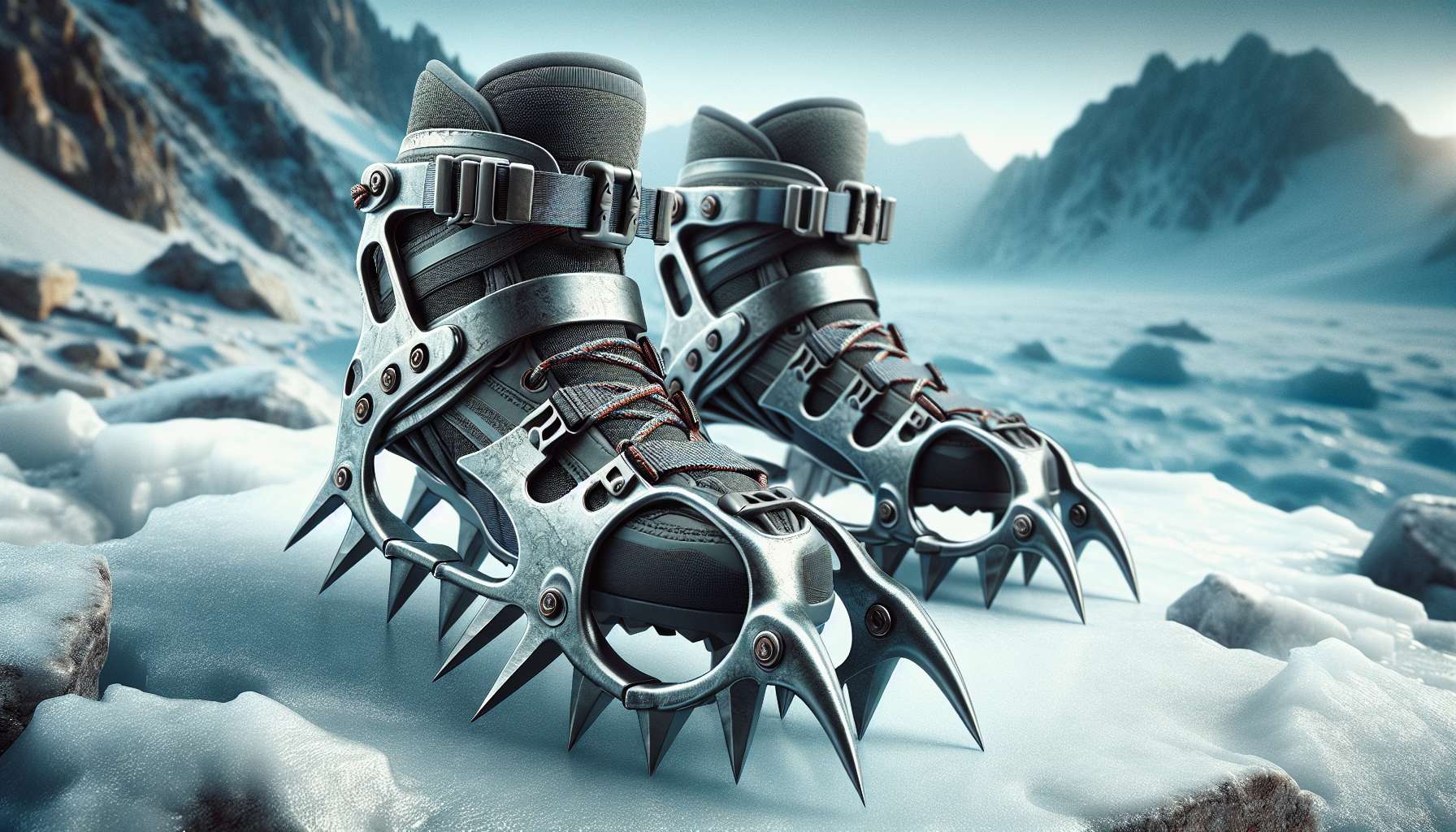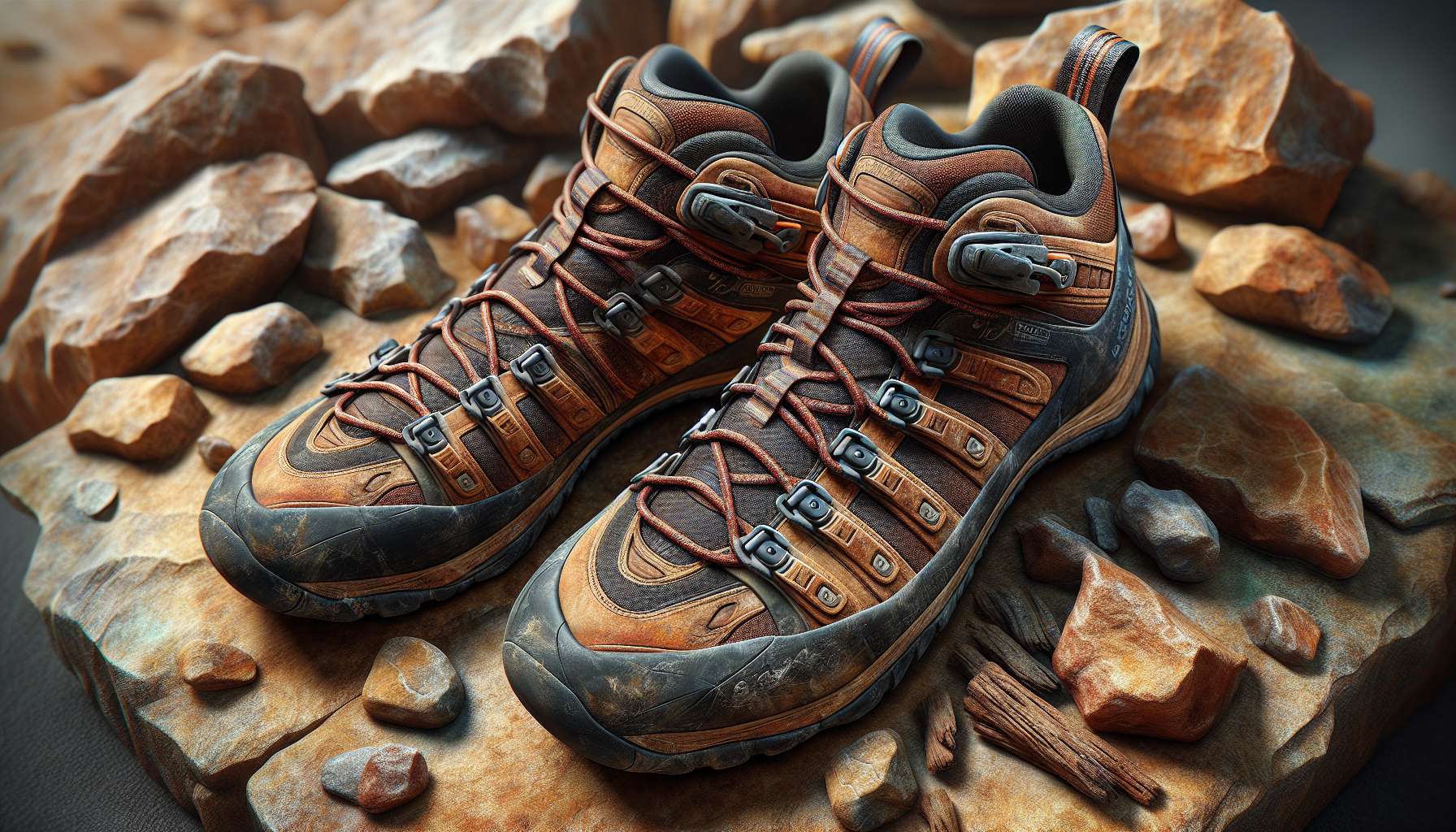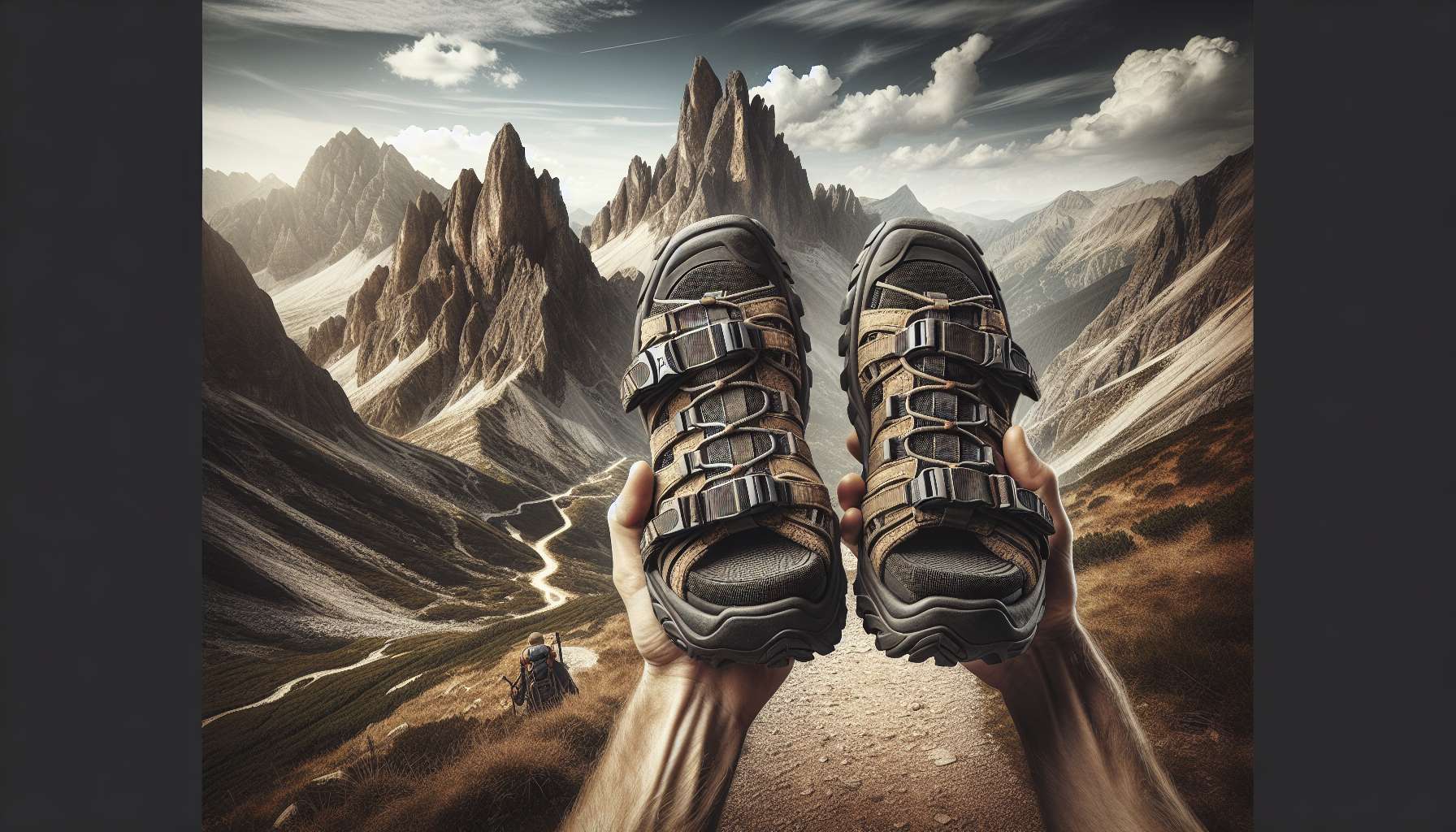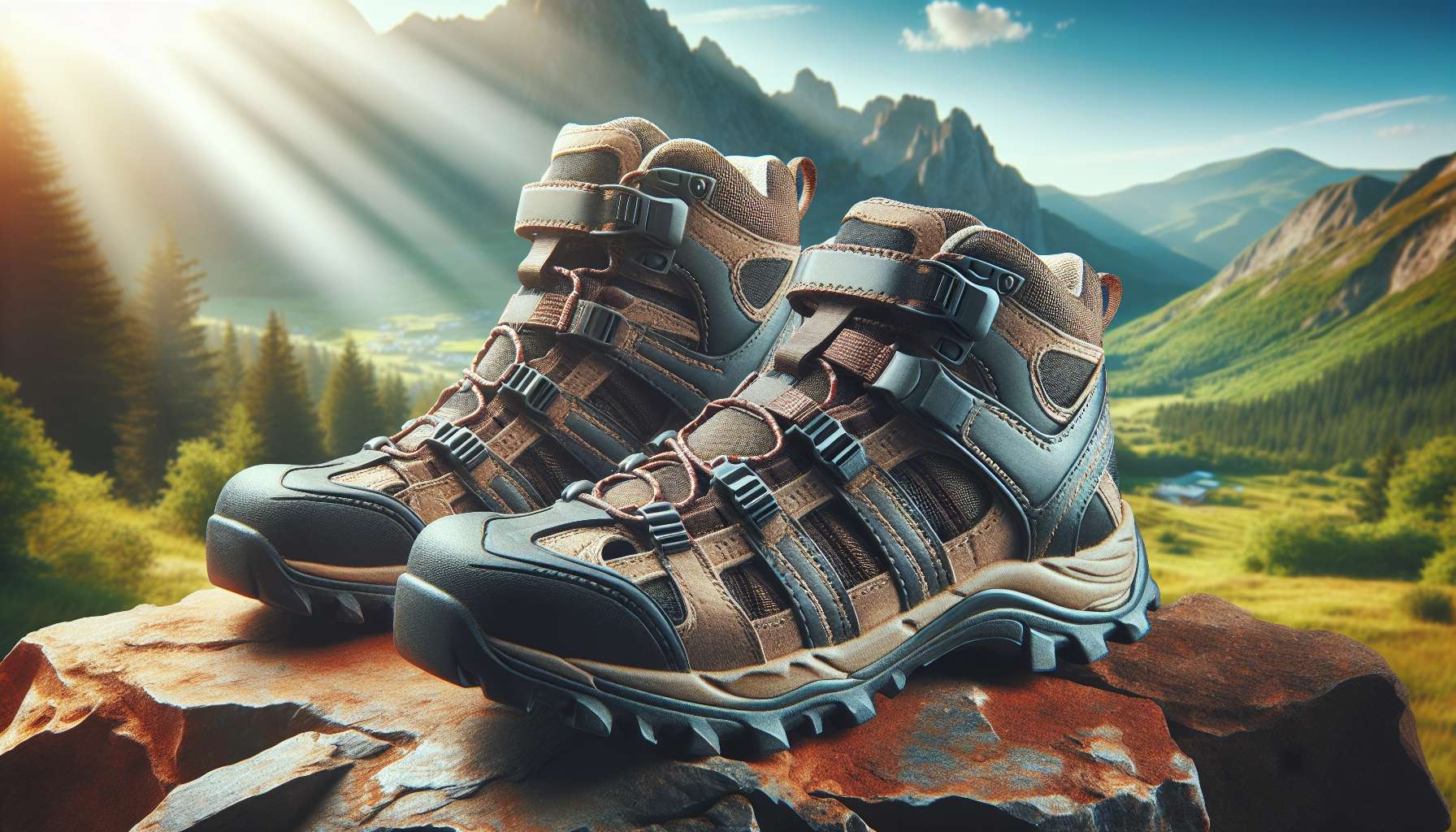The Ultimate Guide to Crampons: Mastering the Art of Traction
When it comes to tackling rugged terrain, icy slopes, or challenging alpine ascents, having the right gear can make all the difference. One essential tool that mountaineers, ice climbers, and hikers rely on is the trusty crampon. These metal spikes attached to the soles of boots provide much-needed traction on slippery surfaces, allowing adventurers to navigate treacherous landscapes with confidence.
In this comprehensive guide, we will delve deep into the world of crampons, exploring their history, design, applications, and impact on outdoor pursuits. From the basics of how they work to the latest innovations in crampon technology, this article will equip you with the knowledge you need to harness the power of these essential tools. So, lace up your boots and get ready to explore the fascinating world of crampons.
The Evolution of Crampons
Before we dive into the technicalities of modern crampons, it’s important to understand their historical roots. The concept of attaching spikes to footwear for better traction dates back centuries, with early versions made from materials like bone or wood. However, it wasn’t until the 19th century that crampons as we know them today began to take shape.
One of the key milestones in crampon development was the invention of the modern 12-point crampon by pioneering climber Oscar Eckenstein in 1908. This design, featuring a combination of horizontal and vertical points, revolutionized traction on ice and snow, opening up new possibilities for mountaineers. Since then, crampon technology has continued to evolve, with lightweight materials, adjustable bindings, and specialized designs catering to a wide range of outdoor pursuits.
Types of Crampons
Today, crampons come in a variety of shapes and styles, each suited to different types of terrain and activities. The two main categories of crampons are strap-on (flexible) and step-in (rigid), each offering unique advantages depending on the user’s needs.
Strap-On Crampons
Strap-on crampons are a versatile option favored by many hikers, mountaineers, and ice climbers for their ease of use and compatibility with a wide range of footwear. These crampons feature flexible frames that can be adjusted to fit different boot sizes and shapes, making them a popular choice for mixed terrain and variable conditions.
Step-In Crampons
Step-in crampons, on the other hand, are designed for more technical mountaineering and ice climbing routes where precise footwork is essential. These rigid crampons have fixed front and heel sections that attach securely to compatible mountaineering boots, providing a stable platform for vertical ice and mixed terrain. While step-in crampons offer superior performance in certain situations, they require specialized boots with toe and heel welts for proper attachment.
Choosing the Right Crampons
When selecting crampons for your adventures, it’s crucial to consider factors like terrain, activity, boot compatibility, and personal preference. Here are some key considerations to keep in mind when choosing the right crampons for your needs:
Terrain
Consider the type of terrain you will be navigating, as this will dictate the style of crampons you need. For icy slopes and technical ice climbing, a rigid step-in crampon with vertical front points may be the best choice. On the other hand, for mixed terrain with varying conditions, a strap-on crampon with adjustable frames and horizontal front points may offer more versatility.
Activity
Think about the specific activities you will be engaging in while wearing crampons. For general hiking and mountaineering, a lightweight and flexible crampon may be sufficient. However, if you are planning on tackling steep ice or technical routes, a more specialized crampon with aggressive front points and anti-balling plates may be necessary.
Boot Compatibility
Ensure that your crampons are compatible with the boots you will be wearing. Step-in crampons require boots with toe and heel welts, while strap-on crampons can generally be used with a wider range of footwear. Check the manufacturer’s guidelines and test the fit before heading out on your adventures to avoid any compatibility issues.
Advanced Crampon Technology
As outdoor enthusiasts push the boundaries of what is possible in mountaineering and ice climbing, crampon manufacturers have responded with cutting-edge innovations to enhance performance and safety. Here are some of the latest advancements in crampon technology that are shaping the future of traction:
Carbon Fiber Construction
Carbon fiber has revolutionized the outdoor gear industry, offering a lightweight yet durable alternative to traditional metal crampons. Carbon fiber crampons are incredibly strong and stiff, providing excellent precision on technical terrain without adding unnecessary weight to your pack. While these crampons come at a higher price point, the performance benefits may be worth the investment for serious climbers.
Modular Design
Modular crampons allow users to customize their traction system based on the terrain and conditions they will encounter. By swapping out front points, linking bars, and anti-balling plates, climbers can fine-tune their crampons for optimal performance in various situations. This versatility makes modular crampons a popular choice for alpinists and ice climbers who face diverse challenges on their routes.
Automatic Locking Systems
Traditional crampons require manual adjustments to secure them to your boots, which can be cumbersome in cold or challenging conditions. Automatic locking systems, such as lever-lock or magnetic closures, streamline the process of putting on and taking off crampons, saving valuable time and energy on the mountain. These innovative locking mechanisms ensure a secure fit without sacrificing convenience.
Expert Opinions on Crampons
To gain further insights into the world of crampons, we reached out to renowned mountaineer and gear expert, Emily Harrington, for her thoughts on the importance of choosing the right crampons for your adventures. According to Emily, “Crampons are a critical piece of equipment for any mountaineer or ice climber, providing the traction needed to safely navigate challenging terrain. Investing in high-quality crampons that are appropriate for your objectives can make a significant difference in your overall performance and enjoyment in the mountains.”
Emily also highlighted the importance of proper maintenance and care for crampons to ensure their longevity and performance. Regularly sharpening the points, inspecting for wear and tear, and storing them in a dry, cool place are essential practices to keep your crampons in top condition for years to come.
Common Misconceptions about Crampons
Despite their importance in outdoor pursuits, crampons are often misunderstood or misused by novice climbers and hikers. Here are some common misconceptions about crampons and the truths behind them:
Crampons are only for expert climbers
While crampons are essential for technical ice climbing and mountaineering, they can also be useful for hikers navigating icy trails or snow-covered slopes. Beginners can benefit from using strap-on crampons in less challenging terrain to improve traction and stability during winter hikes. It’s important to match the difficulty of the terrain with the appropriate crampon style and skill level to ensure a safe and enjoyable experience.
Crampons damage boots
When properly fitted and used, crampons should not damage your boots. However, it’s essential to check for proper compatibility and adjust the crampons according to the manufacturer’s guidelines to prevent unnecessary wear and tear on your footwear. Regularly inspecting the attachment points and straps for any signs of damage can help prolong the life of both your boots and crampons.
FAQs about Crampons
Q: How do I know if my boots are compatible with crampons?
A: Most modern mountaineering boots come with toe and heel welts that are compatible with step-in crampons. For strap-on crampons, look for boots with a stiff sole and suitable attachment points for the straps. Always refer to the manufacturer’s guidelines to ensure proper compatibility.
Q: Can I use crampons for hiking on non-icy terrain?
A: While crampons are designed for icy and snowy conditions, they can also provide added traction on muddy or slippery trails. However, using crampons on dry or rocky terrain can dull the points and reduce their effectiveness over time. Consider the specific terrain and conditions before deciding to use crampons for hiking.
To Wrap Things Up
In conclusion, crampons are a versatile and essential tool for outdoor enthusiasts who navigate challenging terrain and icy slopes. By understanding the different types of crampons, choosing the right model for your activities, and staying informed about the latest technology and best practices, you can make the most of these powerful traction devices. Whether you’re a seasoned mountaineer or a novice hiker, having a solid understanding of crampons will enhance your safety, performance, and enjoyment in the great outdoors.
So, next time you gear up for an alpine adventure, remember to pack your crampons and step confidently into the wild unknown. The world is waiting to be explored, one spike at a time.




